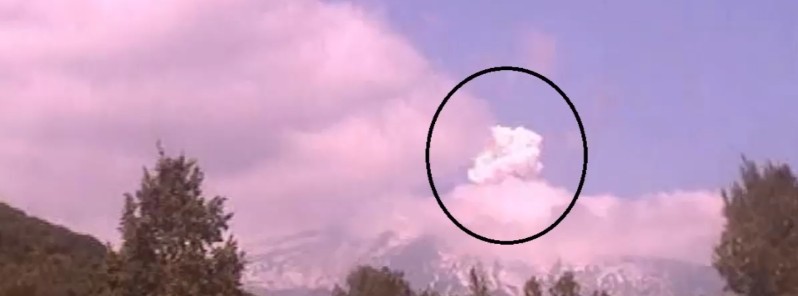10 injured after phreatic-magmatic explosion at Mount Etna

10 people, including BBC crew, scientists and tourists have been injured Thursday, March 16, 2017, after being caught in the middle of a phreatic-magmatic explosion at Mount Etna, Italy. The explosion took place at 11:43 UTC.
"The material thrown into the air fell back down, striking the heads and bodies of people who were the closest," the president of the Italian Alpine Club chapter in Catania, Umberto Marino told reporters.
Italian news agency ANSA said six people were hospitalized, mostly with head injuries, but none of them are in serious condition. INGV volcanologist Boris Behncke was also among the injured. Luckily, he suffered only minor bruises.
According to the BBC, their team of journalists and several tourists had to run for cover after they were caught in the middle of erupting Mount Etna volcano.
BBC's global science reporter, Rebecca Morelle, was on the scene and described the experience in a series of tweets:
"Caught up in incident at Mount Etna – BBC crew & tourists caught up in huge explosion – caused injuries and evacuation from scene," she tweeted at 13:00 UTC today and continued:
"Lava flow mixed with steam – caused huge explosion – group pelted with boiling rocks and steam… Many injured – some head injuries, burns, cuts and bruises. Volcanologist said most dangerous incident experience in his 30-year career… Incident could have been worse – explosions like this have killed – but seems minor injuries for now."
Back at hotel now after Etna explosion. Here's @NewsCamerawoman with the massive hole a lump of rock burnt through her coat. pic.twitter.com/GVSyj3Sa9A
— Rebecca Morelle (@BBCMorelle) March 16, 2017
The explosion took place 11:43 UTC today and is marked by quickly-expanding, dense white cloud. It can be seen in the video below:


The explosion took place on the western edge of the Valle del Bove, about 2 700 m (8 800 feet) above sea level. It occurred at the front of the lava flow that emerges from a vent at the base of the New Southeast Crater, at about 3 200 m (10 500 feet) a.s.l., INGV said.
Currently, the lava advances with a temperature of above 1 000 °C (1 832 °F) in an area covered with snow. The water under the lava flow tends to vaporize and can cause phreatic-magmatic explosions such as the one that occurred today.
Featured image: Phreatic-magmatic explosion at Mount Etna injures 10 people on March 16, 2017. Credit: INGV-OE

I warned for an absolute statement that NOBODY can be there at all without equipment and cover. It should be a question of distance and properly marked by events watch, a systematic signature. The gasses are spaghetti and focal in the breathing. The missing mass is a rather consumption, what then could expect debris. The debris is in changes forward. We spell changeas. Zangheeazz Quinn. We don’t give up even bringing the debris back to a host!
Seriously…what did they THINK was going to happen? It could have been worse. They should thank God they’re still alive to go do stupid things tomorrow.
Journalists at stupid speed
entering a known danger zone, with no personal protective equipment but not a surprise as BBC was there. When the Arab spring(aka nuclear winter) hit Libya, they had hard hats whereas Egypt’s protesters tied bread to their heads. both parties knew there was potential for personal injury. BBC was counting on its overwhelming snowflake opinion to protect it and did even less.
Good comment!